Taylor-Wharton CS Series User Manual
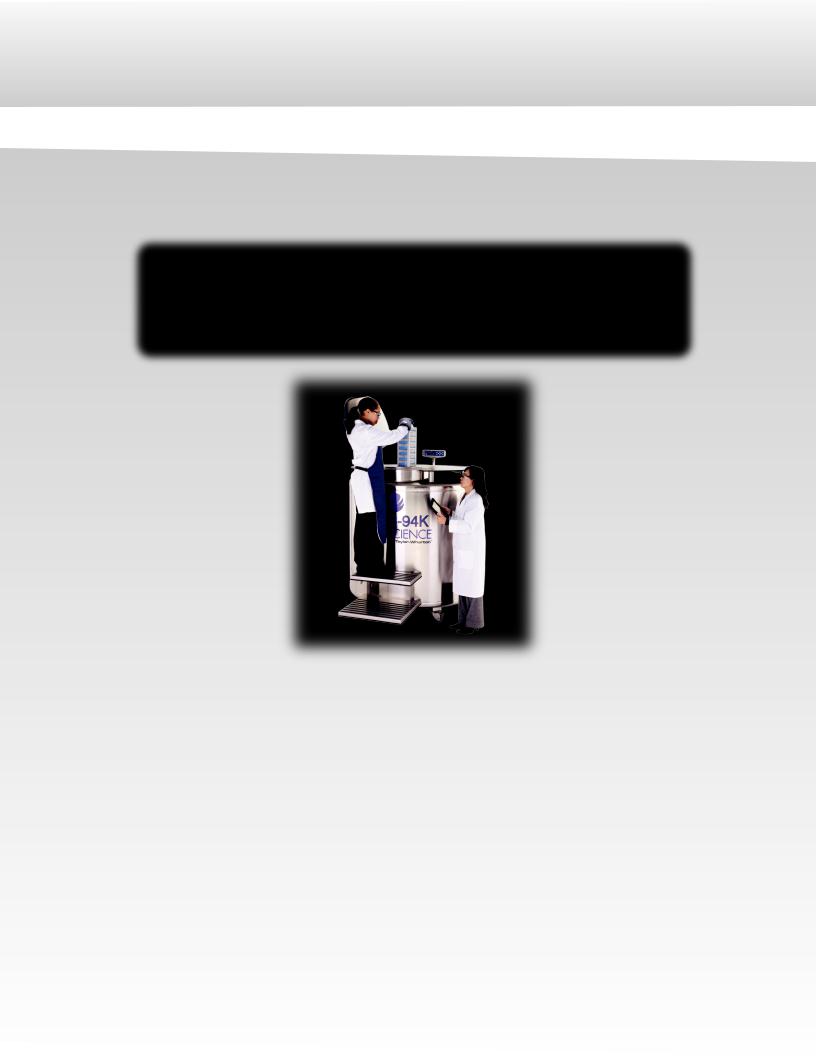
CS SERIES
Control System
CS200 OPERATION & MAINTENANCE INSTRUCTIONS
CAUTION - SAFETY FIRST!
•REVIEW AND UNDERSTAND ALL SAFETY PROCEDURES IN THE “HANDLE WITH CARE” BOOKLET FORM # TW-10 P/N 7950-8052 BEFORE ATTEMPTING TO INSTALL, OPERATE OR PERFORM MAINTENANCE ON THIS LN2 CONTROLLER.
•DO NOT ATTEMPT TO USE OR MAINTAIN ANY LIQUID NITROGEN FREEZER UNTIL YOU READ AND UNDERSTAND THESE INSTRUCTIONS.
•DO NOT PERMIT UNTRAINED PERSONS TO USE OR MAINTAIN THIS UNIT.
•IF YOU DO NOT FULLY UNDERSTAND THESE INSTRUCTIONS, CONTACT YOUR SUPPLIER FOR FURTHER INFORMATION.
•BEFORE ATTEMPTING TO OPERATE THIS CONTROLLER WITH ANY CRYOSCIENCE BY TAYLOR-WHARTON™ LABS & K SERIES UNITS, YOU MUST READ THE SEPARATE OPERATING AND SAFETY MANUAL PROVIDED WITH THAT TAYLOR-WHARTON UNIT.
*CS SERIES Control Systems are used on all Taylor-Wharton LABS units.
The unit featured is only one of the cryostorage systems available in the CryoScience by Taylor-Wharton™ lines.

CS SERIES
TABLE OF CONTENTS |
|
SAFETY PRECAUTIONS.................................................................................. |
3 |
Liquid Nitrogen ...................................................................................................... |
3 |
Extreme Cold - Cautionary Statement .................................................................... |
3 |
Keep Equipment Area Well Ventilated .................................................................... |
3 |
Liquid Nitrogen System .......................................................................................... |
3 |
Electrical.................................................................................................................. |
3 |
GENERAL INFORMATION ............................................................................. |
4 |
CS SERIES Control System Specifications.................................................................. |
5 |
DELIVERY AND RETURNS.............................................................................. |
7 |
Unpacking and Inspection....................................................................................... |
7 |
Freight Damage Procedures ................................................................................... |
7 |
Repackaging for Shipment ...................................................................................... |
7 |
INSTALLATION.............................................................................................. |
8 |
Getting Unit into Service ........................................................................................ |
8 |
Electrical ................................................................................................................. |
8 |
Electromagnetic Compatibility (EMC) ..................................................................... |
8 |
Power Supply Connection ...................................................................................... |
9 |
Validation ............................................................................................................... |
9 |
OPERATION ................................................................................................. |
9 |
Initial Fill ................................................................................................................ |
9 |
Control Components ............................................................................................ |
10 |
CS200 Controller Display Guide............................................................................ |
10 |
Operational Theory............................................................................................... |
11 |
Operating Parameters .......................................................................................... |
14 |
Temperature Monitoring........................................................................................ |
15 |
Liquid Phase Storage............................................................................................. |
15 |
Maintenance......................................................................................................... |
15 |
CONTROLLER OPERATION.......................................................................... |
16 |
Introduction .......................................................................................................... |
16 |
Operation Data..................................................................................................... |
16 |
Communications.................................................................................................... |
16 |
Normal Fill Cycle .................................................................................................. |
16 |
Control Setting Adjustments.................................................................................. |
17 |
Temperature ......................................................................................................... |
20 |
Battery Operation ................................................................................................. |
21 |
Lid Switch.............................................................................................................. |
21 |
Interconnection Block Diagram............................................................................. |
25 |
Wiring Diagram..................................................................................................... |
26 |
Installation & Setup............................................................................................... |
27 |
Diagnostic Menu .................................................................................................. |
29 |
External Connector Ratings................................................................................... |
29 |
LED Status Wheel Flash Patterns........................................................................... |
29 |
Temperature Thermocouple Select ........................................................................ |
30 |
Temperature Calibration ..................................................................................... |
30 |
Test Temperature System....................................................................................... |
31 |
Test Level Sensors.................................................................................................. |
31 |
Alarms and Error Conditions ................................................................................ |
32 |
System Alarms....................................................................................................... |
32 |
Test Alarms ........................................................................................................... |
32 |
Logging.................................................................................................................. |
33 |
Dump Logs............................................................................................................. |
33 |

CS SERIES
TABLE OF CONTENTS (continued...) |
|
Error Logs.............................................................................................................. |
34 |
System Logs........................................................................................................... |
34 |
Temperature Logs ................................................................................................. |
34 |
Erase Logs............................................................................................................. |
35 |
Display Brightness................................................................................................. |
35 |
Making Adjustments to the CS SERIES Control System Sensor Assembly .............. |
35 |
Removing/Installing the Solenoid Valve ............................................................... |
36 |
Controller Electrical Tests...................................................................................... |
36 |
Plumbing Assembly............................................................................................... |
37 |
TROUBLESHOOTING................................................................................... |
37 |
Symptoms ............................................................................................................. |
37 |
Controller Will Not Turn ON ................................................................................. |
37 |
Indicates High Liquid Level ................................................................................... |
38 |
Indicates Low LN2 Supply...................................................................................... |
39 |
Indicates Open Sensor.......................................................................................... |
39 |
Temperature Reading 10 to 20 Degrees Warm...................................................... |
39 |
Fill Solenoid Cycles On and Off............................................................................. |
40 |
Fill Solenoid Makes Excessive Humming Noise..................................................... |
40 |
Display = “Check”................................................................................................ |
40 |
Lid Open Alarm..................................................................................................... |
40 |
QCF (Quick Chill Feature) Will Not Operate ........................................................ |
41 |
Defog Feature Will Not Operate .......................................................................... |
41 |
Push Buttons Will Not Respond ............................................................................. |
41 |
Liquid Level Readout is Incorrect .......................................................................... |
41 |
Power Failure Alarm ............................................................................................. |
41 |
REPLACEMENT PARTS ................................................................................. |
41 |
SERVICE AND MAINTENANCE HISTORY LOG............................................. |
42 |
Appedix...................................................................................................... |
43 |
EN Compliance Tables........................................................................................... |
43 |
Declaration of Conformity..................................................................................... |
47 |
Warranty............................................................................................................... |
47 |
Labels.................................................................................................................... |
48 |

CS SERIES
SAFETY PRECAUTIONS
Liquid Nitrogen
Nitrogen is an inert, colorless, odorless, and tasteless gas making up four-fifths of the air you breathe – and can be very dangerous. Air is roughly one-fifth oxygen. Liquid nitrogen is at a temperature of -196°C (-320°F) under normal atmospheric pressure. Cryogenic freezers are used in LN2 service only.
Extreme Cold - Cautionary Statement
Accidental contact of liquid nitrogen or cold issuing gas with the skin or eyes may cause a freezing injury similar to frostbite. Handle the liquid so it won’t splash or spill. Protect your eyes and cover the skin where the possibility of contact with the liquid, cold pipes and equipment, or cold gas exists. Safety goggles or a face shield should be worn when operating this equipment. Insulated gloves that can be easily removed and long sleeves are recommended for arm protection. Trousers without cuffs should be worn outside boots or over the shoes to shed spilled liquid.
Keep Equipment Area Well Ventilated
Although nitrogen is non-toxic and non-flammable, it can cause asphyxiation in a confined area without adequate ventilation. Any atmosphere not containing
enough oxygen for breathing can cause dizziness, unconsciousness, or even death. Nitrogen, a colorless, odorless, and tasteless gas that cannot be detected by the human senses, will be inhaled normally as if it were air. One (1) liter of liquid nitrogen is equivalent to 696 liters of nitrogen gas. Without adequate ventilation, the expanding nitrogen will displace the normal air resulting in death.
Liquid Nitrogen System
The liquid nitrogen supply pressure at the inlet to the refrigerator should be in the range of 10 psig (0.7 bar/69 kPa) to 20 psig (1.4 bar/138 kPa) for optimum performance. Higher operating pressures will increase transfer losses and create
excessive turbulence of the liquid in the refrigerator, which can generate false signals to the liquid level controller causing the refrigerator to under-fill. In “liquid phase” storage applications, excessive turbulence can cause splashing which could result in personal injury and/or damage to the refrigerator. When installing piping or fill hose assemblies, make certain a suitable safety relief valve is installed in each section
of plumbing between any two isolation points. Trapped liquefied gas will expand greatly as it warms and may burst hoses or piping causing damage or personal injury. A relief valve is installed in the refrigerator plumbing to protect the line between the customer supplied shut-off valve and the refrigerator solenoid valve. Relief valves can be piped to the outside of the building.
Electrical
•This product is not intended for a life support function.
•This product is intended to be used in hospitals and clinics.
•This product has no Radio Transmitter (Intentional Radiator) functions.
•This product is not intended for electromagnetic shielded rooms only.
•This product does not intentionally apply RF energy for its function.
•This product does not intentionally receive RF energy for its function.
The liquid level controllers used with these refrigerators operate from 12 VDC. Disconnect the electrical power cord from the outlet before attempting any service.
WARNING:
The following safety precautions are for your protection.
Before installing, operating, or maintaining this unit read and follow all safety precautions in this section
and in reference publications. Failure to observe all safety precautions can result in property damage, personal injury, or possibly death.
WARNING: Maintain adequate ventilation to prevent asphyxiation hazard (see Safety Precautions).
Caution:
When installing field fabricated piping, make certain a suitable safety relief valve is installed
in each section of piping between any two isolation points.
WARNING:
Inlet pressure should not exceed 22 psig (1.5 bar/152 kPa). Higher pressures could result
in damage to equipment.
WARNING: Electrical shock can kill. Do not attempt any service on these units without first disconnecting the
electrical power cord.
3
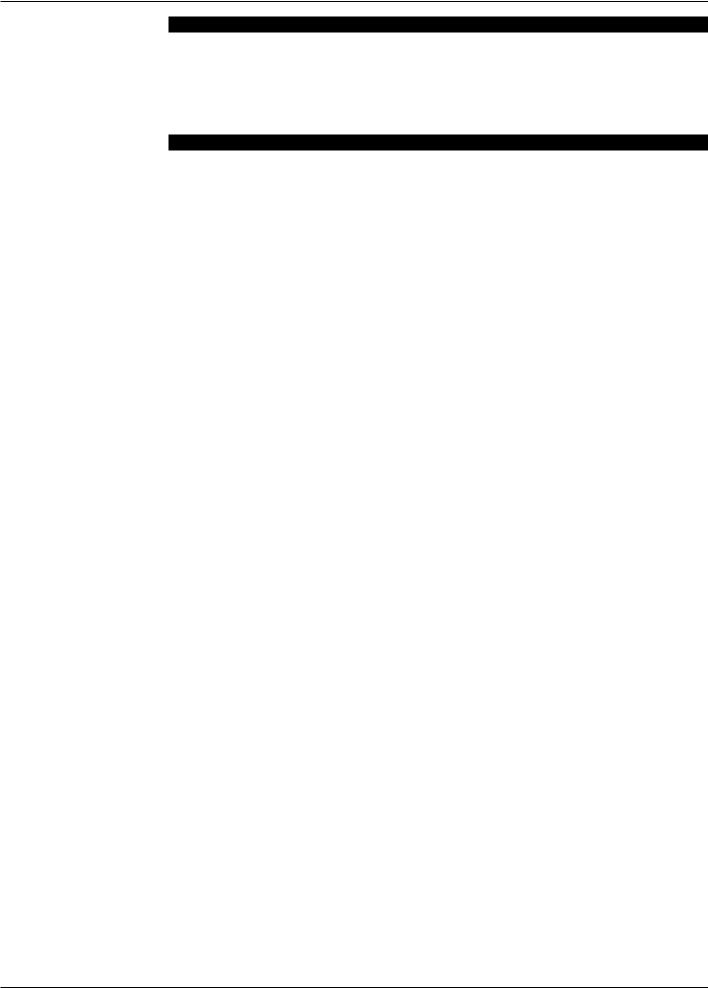
CS SERIES
For more detailed information concerning safety precautions and safe practices to be observed when handling cryogenic liquids consult CGA publication P-12 “Safe Handling of Cryogenic Liquids” available from the Compressed Gas Association:
CGA website: www.cganet.com; CGA customer service +1.703.788.2700; or email customerservice@cganet.com.
GENERAL INFORMATION
The CS SERIES Control System can monitor and control both the liquid nitrogen level and the vapor temperature range in the cryostorage unit you have selected. CS SERIES Control Systems are designed to work with Taylor-Wharton LABS Cryostorage Systems. The features are designed to provide a safe environment for samples while at the same time tracking all relevant information associated with the freezer. This control provides a complete historical record of the environment in your unit and therefore, the environment in which your samples have been stored in this system. This controller features a vacuum fluorescent display. The addition of a liquid nitrogen supply and inventory control racks for systematic retrieval of stored product completes the total Cryostorage System.
Taylor-Wharton LABS Cryostorage Systems are designed for applications where extremely low temperature storage of biological products is required. They are also appropriate for industrial or other applications where liquid nitrogen temperatures and high capacity are needed.
Before beginning installation or operation of this CS SERIES Control System, make sure that you read and understand this manual as well as the operating and safety instructions for the cryostorage unit you will be using with this controller.
4

CS SERIES
CS SERIES Control System Specifications
Control Type: |
LN2 Level Control & Temperature Control |
Level Measurement Sensor Type: 8-Thermistor Fixed |
|
|
4-Thermistor Adjustable |
|
Range: 8 inch range (8-Thermistor) |
|
Low, Normal, High (4-Thermistor) |
|
Redundancy Multiple discrete points |
Temperature Measurement: |
Sensor Type: Type T Thermocouples |
|
Accuracy of 1.5% with Resolution of 0.1°c |
|
Number of Channels: 2 |
|
Temperature Display Units: °C, F, K, R |
Electrical: |
Input Voltage: 100-240 VAC |
|
Input Current (max: 1.75 A |
|
Input Current (continuous): 0.5 A |
|
Power Consumption (max): 21 W |
|
Power Consumption (continuous): 6 W Input |
|
Frequency: 50/60 Hz |
|
Output: 12 VDC |
|
Control Input Voltage: 12 VDC |
|
Power Cord: Available for all countries |
Battery: |
Rating: 12 Volt, 18Ah |
|
Type: Absorbent Glass Mat (AGM) Sealed Non- |
|
Spillable |
|
Short Protection: Installed PCB with thermal fuse |
|
Battery Cover: Vinyl |
|
Solenoid Valve Input Voltage: 12 VDC |
|
Input Current 0.96 amps |
Communications: |
Protocol: Connectivity Access Network (CAN) |
|
Number of Communication Ports: 3 |
|
User Interface: Display Type Vacuum Fluorescent |
|
Display: (VFD) |
|
Buttons:11 |
|
Level, Temperature and Alarm |
|
Information |
|
“At a Glance” Status LED status wheel |
|
Filling 1 LED |
|
Menu Access 1 LED |
|
Power LED |
Control Tests: |
Power Up Self Test Control System Check |
|
Thermistor Status |
|
Battery voltage |
|
Control voltages |
|
Temperature Circuit |
Alarms: |
Low Level Alarm: Always enabled |
|
High Level Alarm: Always enabled |
|
Sensor Error Alarm: Always enabled |
High Temperature Alarm: (T/C #1, T/C #2)
Programmable
5

CS SERIES
Alarms (continued...): |
Low Temperature Alarm: (T/C #1, T/C#2) |
|
Programmable |
|
Thermocouple Calibration: Alarm Always enabled |
|
Thermocouple Open Alarm: Always enabled |
|
Power Failure (Remote only): Always enabled |
|
Low LN2 Supply Alarm: Programmable |
|
Battery Mode Warning: Always enabled |
|
Lid Open Too Long Alarm: Programmable |
|
Valve Stuck Open Alarm: Programmable |
|
Unauthorized Access Warning: Programmable |
|
LN2 Usage Warning: Programmable |
|
Low Battery Voltage: Always enabled |
|
Temperature Alarm Delay: Programmable |
|
Audible Alarm: Always enabled |
|
Audible Alarm Re-trigger: Programmable |
|
Visual Alarm Indicator: Always enabled |
|
Remote Alarm Delay: Programmable |
Buttons: |
Power: Turns power on/off |
|
Fill/Defog: Open Solenoid Valve |
|
Stop: Close Solenoid Valve |
|
Menu: Access Menu |
|
Mute: Silence audible |
|
Enter: Save a setting or select a menu choice |
|
Back/Exit: Leave a setting unchanged or back out |
|
of menu |
|
Up Arrow: Scroll the menu system or increase a |
|
value |
|
Down Arrow: Scroll the menu system or decrease |
|
a value |
|
Left Arrow: Scroll horizontal menu |
|
Right Arrow: Scroll horizontal menu |
Data Collection: |
Temperature |
|
Level |
|
Alarms |
|
Memory: 4 Mb |
Dimensions: |
Display Width: 9.5 in. (241 mm) |
|
Display Height: 2.0 in. (50.8 mm) |
|
Display Depth: 1.31 in. (33.3 mm) |
|
Display Weight: 0.625 lbs (.28 kg) |
|
Main Control Width: 8.875 in. (225.4 mm) |
|
Main Control Height: 6.688 in. (169.9 mm) |
|
Main Control Depth: 1 in. (25.4 mm) |
|
Main Control Weight: 1.0 lbs (.45 kg) |
|
Battery Width: 7.25 in. (184.2 mm) |
|
Battery Height: 6.375 in. (161.9 mm) |
|
Battery Depth: 3.25 in. (82.6 mm) |
|
Battery Weight: 12.4 lbs (5.6 kg) |
6
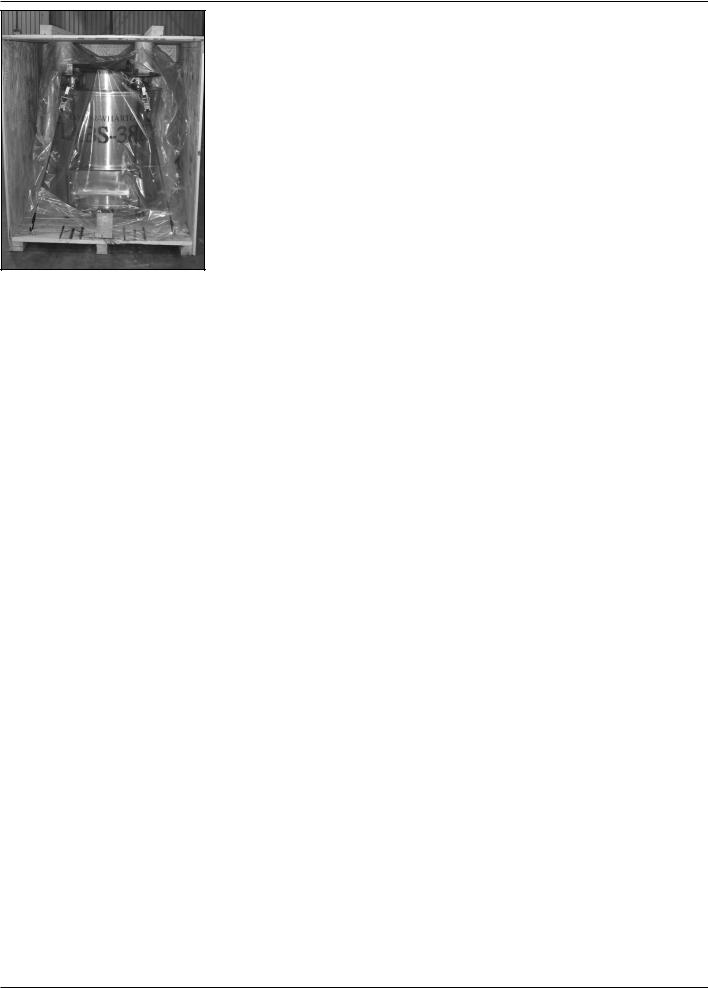
CS SERIES
DELIVERY AND RETURNS
Unpacking and Inspection
Inspect shipping containers for external damage. All claims for damage (apparent or concealed) or partial loss of shipment must be made in writing within five (5) days from receipt of goods. If damage or loss is apparent, please notify the appropriate parties as indicated below:
Domestic LTL Shipments – The customer should notify and file the appropriate damage claims with the carrier. All products are shipped FOB Origin.
Domestic UPS Shipments – Any damage should be noted and reported to shipper upon
delivery, and Taylor-Wharton must also be notified. Confirm with Taylor-Wharton Customer Service the filing procedures for any UPS damage claims.
International Shipments – Any damage and/or claims are to be filed with the carrier. Insurance agent(s) and customs’ brokers should also be notified.
In all cases, Taylor-Wharton should be notified so we can assist if needed in filing damage claims.
Open the shipping containers; a packing list is included with the system to simplify checking that all components, cables, accessories, and manuals were received. Please use the packing list to check off each item as the system is unpacked. Inspect for damage. Be sure to inventory all components supplied before discarding any shipping materials. If there is damage to the system during transit, be sure to file proper claims promptly. Please advise Taylor-Wharton of such filings. In case of parts or accessory shortages, advise Taylor-Wharton immediately. Taylor-Wharton cannot be responsible for any missing parts unless notified within 10 days of shipment.
Freight Damage Procedures
Any freight damage claims are your responsibility. Cryostorage Systems are delivered to your carrier from Taylor-Wharton’s dock in new condition; when you receive our product you may expect it to be in that same condition. For your own protection, take time to visually inspect each shipment in the presence of the carrier’s agent before you accept delivery. If any damage is observed, make an appropriate notation on the freight bill. Then, ask the driver to sign the notation before you receive the equipment. You should decline to accept containers that show damage which might affect serviceability.
Repackaging for Shipment
If it is necessary to return any part of the system for repair or replacement, a Material Return Authorization (MRA) number must be obtained from an authorized factory representative before returning the equipment to our service department. Contact your distributor for return authorization. When returning equipment for service, the following information must be provided before obtaining an MRA:
A.System model and serial number, and controller model and unit, if available.
B.User’s name, company, address, and phone number
C.Malfunction symptoms
7

CS SERIES
CAUTION:
If using a power source other than North American 110/220 VAC, contact TaylorWharton Customer Service to make sure you are using the appropriate converter. Use of an unapproved power
source converter may cause permanent damage to the unit.
WARNING: Electrical shock can kill. Do not attempt any service on these units without first disconnecting the
electrical power cord.
WARNING: Maintain adequate ventilation to prevent asphyxiation hazard (see Safety Precautions).
WARNING:
If the fill fails to stop for any reason, quickly close the liquid supply valve to prevent overfilling until the cause of the problem can be determined.
If possible, the original packing material should be retained for reshipment. If not available, consult Taylor-Wharton for shipping and packing instructions. It is the responsibility of the customer to assure that the goods are adequately packaged for return to the factory. All refrigerators returned to Taylor-Wharton must be clean and sterile before return. Refer to the operating manual of the freezer you are using for cleaning instructions.
INSTALLATION
Getting Unit into Service
Your Cryostorage System comes with complete instructions for how you should remove the unit from the crate and put it into service. Read both this manual and your Cryostorage System’s manual before beginning any installation. Make sure to follow any required procedures and safety guidelines when you are connecting your Liquid Nitrogen source.
The CS SERIES Control System is designed to be operated at normal room temperatures 15° C to 27° C (60° F to 80° F) at a relative humidity level below 50%. The humidity level should be maintained such that the electronics are not exposed to condensation.
The Taylor-Wharton Cryostorage freezer should be positioned such that the all sides of the unit are easily accessible and the user can easily connect/disconnect the power cord from the wall socket.
Proper ventilation MUST BE adequate to sustain life for those working with or maintaining this equipment.
Electrical
The liquid level controllers used with these refrigerators operate at 12 VDC. The external transformer has a 100/240 VAC primary. Disconnect the electrical power cord from the outlet before attempting any service.
Electromagnetic Compatibility (EMC)
Although this equipment conforms to the intent of the 2004/108/EC EMC Directive, all medical equipment may produce electromagnetic interference or be susceptible to electromagnetic interference. The following are guidance and manufacturer’s declarations regarding EMC for the CS SERIES Control System.
The CS SERIES Control System needs special precautions regarding EMC and needs to be installed and put into service according to the EMC information provided in the following pages.
Portable and Mobile RF communications equipment can affect the performance of the CS SERIES Control System. Please use the guidelines and recommendations specified in the EN Compliance tables found on pages 43-46.
Other Medical Equipment or Systems can produce electromagnetic emissions and therefore can interfere with the functionality of the CS SERIES Control System. Care should be used when operating the CS SERIES Control System adjacent to or stacked with other equipment. If adjacent or stacked use is necessary, the CS SERIES Control System should initially be observed to verify normal operation in the configuration in which it will be used.
The electrical cables, external power supplies and accessories listed or referenced in this manual have been shown to comply with the test requirements listed in the
8

CS SERIES
EN Compliance tables found on pages 43-46. Care should be taken to use only manufacturer-recommended cables, power supplies and electrical accessories with the CS SERIES Control System. If a third-party supplier offers cables, external
power supplies and electrical accessories for use with the CS SERIES Control System and they are not listed or referenced in this manual, it is the responsibility of that third-party supplier to determine compliance with the standards and tests in the EN Compliance tables found on pages 43-46.
The use of electrical cables and accessories other than those specified in this manual or referenced documents may result in increased electromagnetic emissions from the CS SERIES Control System or decreased electromagnetic immunity of the CS SERIES Control System.
Power Supply Connection
Connect the power supply to your LABS Cryostorage System and then plug the power supply into a surge-protected 110/220 VAC outlet.
Validation
Some organizations require that equipment be validated periodically. If information is needed on the proper techniques to validate this equipment, please contact your supplier.
OPERATION
These instructions are for operators experienced with cryogenic equipment. Before operating the system, become familiar with the safety precautions in this manual and in reference publications. Make certain all applicable provisions set forth in the Installation Section have been followed before placing a system in operation. Study this manual thoroughly. Know the location and function of all system components.
Initial Fill
The Cryostorage System, using the CS SERIES Controller, comes preset from the factory. The liquid nitrogen supply pressure at the inlet to the refrigerator should be in the range of 10 psig (0.7 bar/69 kPa) to 20 psig (1.4 bar/138 kPa) for optimum performance. Higher operating pressures will increase transfer losses and create excessive turbulence of the liquid in the refrigerator which can generate false signals to the liquid level controller causing the refrigerator to under fill. In “liquid phase” storage applications, excessive turbulence can cause splashing which could result in personal injury.
For complete instructions for the initial fill refer the Quick Start Guide that comes with your cryogenic freezer model.
WARNING: This equipment is intended for
use by healthcare professionals. As with all electrical medical equipment, this equipment may cause radio interference or may disrupt the operation of nearby equipment. It may
be necessary to take mitigation measures such as re-orienting or relocating the
CS SERIES Control System unit or shielding the location.
9
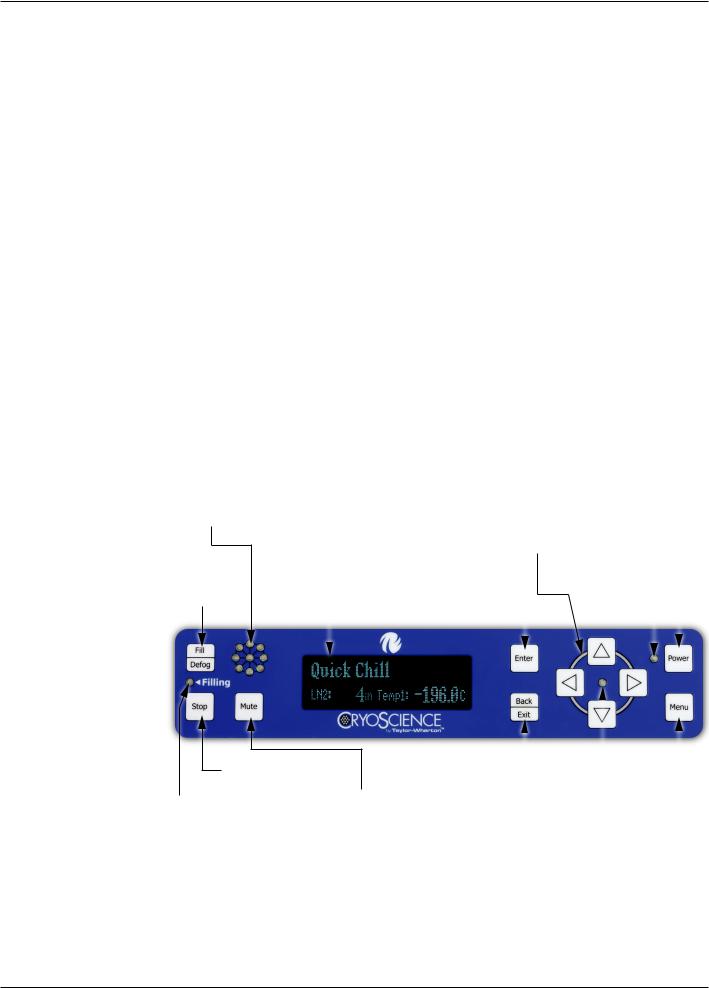
CS SERIES
Control Components
CS SERIES Control System Components
The CS SERIES Control System for the Taylor-Wharton Cryostorage freezer consists of the following components:
•Main Control Module
•VFD (Vacuum Florescent Display) Module
•Shielded Display Cable
•Wiring Harness Assembly
•Power Supply
•Thermocouple Assembly (Optional Second Thermocouple)
•Sensor Assembly
•Cryogenic Solenoid Valve
•Remote Alarm Plug
•Lid Switch Assembly
•12 Volt, 18aH battery
•Solenoid Valve Assembly with Freezeguard
•Strainer
The CS SERIES Control System is assembled onto the freezer at the factory and completely tested. Refer to the Quick Start Guide for freezer set-up. Start operation of the control system by plugging the power cord into the wall outlet. Press and hold the POWER button for 2 seconds. The CS SERIES Control System will go through
a short startup routine and then start operation. Refer to Figure 2.0 below CS200 Controller Display for a description of the controller’s navigation buttons.
CS200 Controller Display Guide
Status Wheel
Fill Button Used to Open the Valve
VFD Graphics Display |
Directional Buttons |
|
|
|
|
||
Shows information |
Increment/decrement values or allow |
||||||
about the Freezer |
movement through the menu system |
||||||
|
Enter button “selects” |
Power Indicator |
|||||
|
|||||||
|
|
|
|
|
|||
|
a Menu choice or setting |
|
Power On/Off |
||||
|
|
|
|
|
|
|
|
|
|
|
|
|
|
|
|
|
|
|
|
|
|
|
|
Stop Button used to Close the Valve
Mutes the Valve Indicator lights Audible Alarm if the Valve is Open
|
|
|
|
Enter/Exit |
|
|
|
|
|
|
|
|
|
|
|
|
|
|
|
|
Back Button moves |
|
|
|
|||
|
|
|
||||
out of Menu System |
|
Menu System |
||||
or leaves current |
|
|
|
|
||
Setting unchanged |
Menu Indicator |
|||||
Figure 2.0 CS200 Controller Display
10

CS SERIES
Operational Theory
The CS SERIES Control System automatically maintains the Liquid Nitrogen (LN2) level and monitors temperature in the Cryogenic freezer. Operational conditions are monitored and any alarm is triggered if necessary. Operations data is stored in memory on the control board.
|
#8 |
|
#7 |
High Level Alarm |
#6 |
Stop Fill |
#5 |
|
#4 |
Start Fill |
#3 |
Low Level Alarm |
#2 |
|
#1 |
Figure 3.0 Thermister LN2 Level
The CS CONTROL SYSTEM uses thermistors to measure the LN2 level within the vessel. A thermistor is a thermal resistor and its resistance changes as the
temperature changes. When a thermistor is submerged in LN2, its resistance will be significantly greater than its resistance at room temperature. The control can detect this resistance change and determine the level of the LN2 within the freezer. The CS CONTROL SYSTEM is designed to work with an 8 thermistor assembly. There are four thermistors that can be selected that will maintain the LN2 level. These selected thermistors correspond to Low Alarm, Start Fill, Stop Fill and High Alarm. When the LN2 level drops below the Start Fill thermistor, the control opens a solenoid valve allowing LN2 to enter the vessel. This continues until the Stop Fill thermistor is submerged in LN2 at which point the solenoid valve is closed preventing the flow of additional LN2 into the vessel. The Low Alarm, Start Fill, Stop Fill and High Alarm settings can all be changed by the user through the menu system.
11
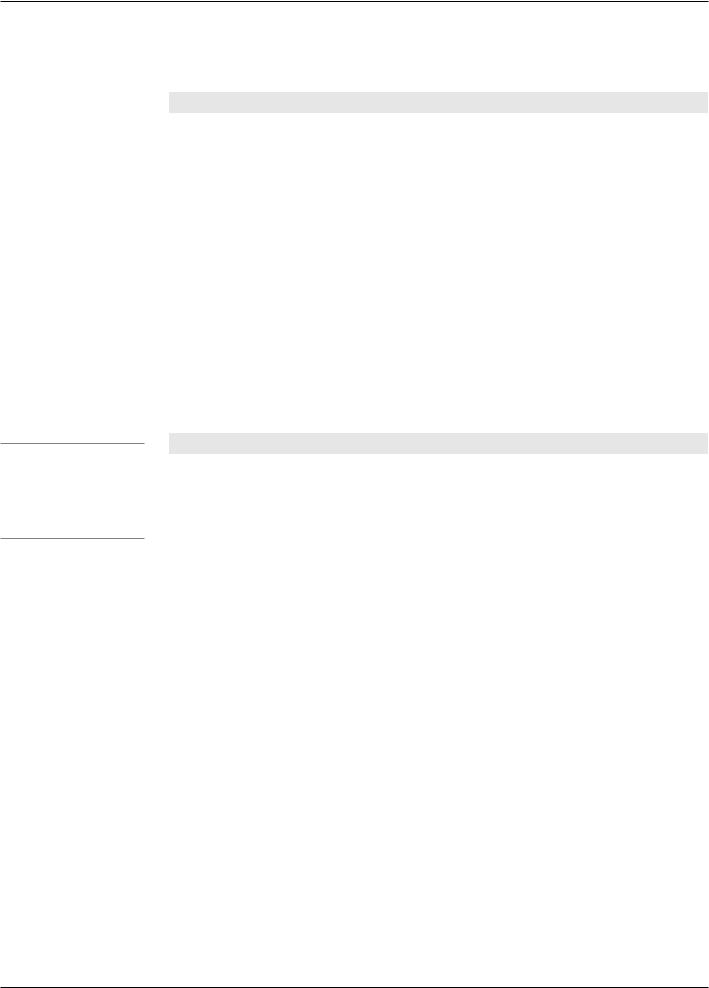
CS SERIES
Note: Please see description of the offset. Level displayed may vary depending on the offset setting.
The LN2 level is indicated on the display and is determined by the number of thermistors submerged in LN2 according to the table below:
Table 1.0 8-Thermistor Sensor (G=NORMAL, L=LN2 Flow)
#1 |
#2 |
#3 |
#4 |
#5 |
#6 |
#7 |
#8 |
Offset |
Display |
Actions |
|
|
|
|
|
|
|
|
|
|
|
G |
G |
G |
G |
G |
G |
G |
G |
0 |
0 |
Low Alarm, Filling |
|
|
|
|
|
|
|
|
|
|
|
L |
G |
G |
G |
G |
G |
G |
G |
0 |
1 |
Low Alarm, Filling |
|
|
|
|
|
|
|
|
|
|
|
L |
L |
G |
G |
G |
G |
G |
G |
0 |
2 |
Filling |
|
|
|
|
|
|
|
|
|
|
|
L |
L |
L |
G |
G |
G |
G |
G |
0 |
3 |
Normal |
|
|
|
|
|
|
|
|
|
|
|
L |
L |
L |
L |
G |
G |
G |
G |
0 |
4 |
Normal |
L |
L |
L |
L |
L |
G |
G |
G |
0 |
5 |
Stop Fill |
L |
L |
L |
L |
L |
L |
G |
G |
0 |
6 |
High Alarm |
L |
L |
L |
L |
L |
L |
L |
G |
0 |
7 |
High Alarm |
|
|
|
|
|
|
|
|
|
|
|
L |
L |
L |
L |
L |
L |
L |
L |
0 |
8 |
High Alarm, Valve |
|
|
|
|
|
|
|
|
|
|
stuck Open Alarm |
|
|
|
|
|
|
|
|
|
|
|
Alarm Conditions
The CS SERIES Control System monitors a number of conditions and provides an alarm if a problem is detected. The alarms are listed below:
Table 2.0 Alarm Conditions
ALARM |
PROBLEM DETECTED |
|
|
Low Level Alarm |
LN2 level is too low. Thermistor #2 on the sensor assembly is |
|
not submerged in LN2. |
High Level Alarm |
LN2 level is too high. Thermistor #6 on the sensor assembly |
|
is submerged in LN2. |
Sensor Error Alarm |
A problem exists with the level sensor. The control detects an |
|
open sensor circuit meaning that the sensor is unplugged or |
|
the sensor assembly has been damaged. A faulty sensor is |
|
denoted as “O” for open. |
|
|
High Temperature Alarm |
The temperature detected is warmer than the high |
|
temperature alarm setting. |
|
|
Low Temperature Alarm |
The temperature detected is colder than the low temperature |
|
alarm setting. |
|
|
Thermocouple Calibration |
The calibration data is incorrect. |
Alarm |
|
Thermocouple Open Alarm |
A problem exists with the temperature sensor |
|
(thermocouple). The control detects an open circuit meaning |
|
that the sensor is unplugged or the sensor assembly has |
|
been damaged. |
Power Failure |
No Power. |
Low LN2 Supply Alarm |
A problem may exist with the LN2 supply connected to the |
|
freezer. This alarm occurs if the freezer does not fill within |
|
the designated amount of time determined by the setting |
|
on the control. Possible reasons include an empty supply |
|
cylinder, low head pressure in the supply cylinder or a closed |
|
shut off valve. |
|
|
LN2 Use Warning |
The consumption of LN2 has increased and should be |
|
checked. |
12

CS SERIES
Table 2.0 Alarm Conditions
ALARM |
PROBLEM DETECTED |
|
|
Operating in Battery Mode |
The power from the power supply has been disrupted and |
Alarm Warning |
the control system is operating on battery power. |
Low Battery Voltage |
The voltage on the battery is low. |
|
|
Lid Open Too Long Alarm |
The lid has been opened for a period which is longer than |
|
the designated alarm setting. |
|
|
Valve Stuck Open Alarm |
The valve is stuck open. |
|
|
Unauthorized Access |
The lid has been opened and an incorrect or no |
Warning |
identification has been entered. |
|
|
Temp Alarm Delay |
This is the amount of time after a warm temperature is |
|
detected before the control goes into alarm. |
Audible Alarm Retrigger |
The audible alarm is retriggered if the error condition that |
|
caused it is not corrected. The retrigger time can be adjusted |
|
by the user. |
Remote Alarm Relay |
The control provides a relay to provide an external signal |
|
that an alarm condition has occurred. The user can set the |
|
remote alarm timer that determines the amount of time an |
|
error must be active before the relay is triggered. |
All alarms include the following:
•The flashing status wheel flashes to signal an error condition
•An audible tone sounds
•The error detected is displayed and scrolled on the screen
•The remote alarm relay changes state to provide a dry contact output signal
Lid Switch
The LABS Lid Switch (Figure 4.0) is attached to the hinge and determines whether or not the lid is open on the freezer. This also allows the control to determine whether to activate the Auto Defog, Quick Chill or Lid Alarm features.
Lid Switch
Figure 4.0 LABS Lid Switch
Solenoid Valve
These units are designed to work with 12 VDC solenoid valve (see Figure 17.0 LABS Plumbing Assembly on page 37).
Thermocouples
Type T thermocouples monitor the temperature in the freezer. The user may choose to use NONE, 1 or 2 thermocouples with this control at any time. (The unit comes complete with one Thermocouple)
13

CS SERIES
Power Supply
A 12 VDC power supply is supplied for the CS SERIES Control System. The system is supplied with a transformer compatible with common household (North American) 100/240 VAC. (For other power outlets contact Taylor-Wharton Customer Service.)
UL approval for the system as a whole is not required since the control operates on low voltage. If your power source differs, or is subject to disruption or line surges due to other equipment on line, consult your Taylor-Wharton representative.
Remote Alarm
If an error condition occurs after a user defined period of time, a remote alarm can be initiated. This is accomplished by connecting a remote device to the remote alarm jack on the rear electrical panel. The 3-pin jack on the back of the unit provides continuity between pin #2 (common) and pin #3 in the normal condition. Continuity between pin #1 and pin #2 is provided in an error condition.
Remote Alarm Connector
Figure 5.0 Remote Alarm Plug Connection
Operating Parameters
When materials are immersed in liquid nitrogen, they will assume the temperature of the liquid (-196°C/-320°F). When material is stored in the vapor phase over the liquid, the liquid nitrogen is still a very cold refrigerant, but the refrigerator’s interior temperature increases as product is stored higher over the liquid. This temperature differential is not significant for many biological storage applications, and is affected by the amount of product stored in the refrigerator, the type size and material of inventory control system, and the liquid level in the unit.
The liquid level in the refrigerator is determined by the position of the of the Thermistor Assembly in the sensor tube. These sensors are set at installation to maintain a specific liquid level. A filling cycle is initiated when the level falls below the Start Fill sensor and is completed when the Stop Fill sensor is reached. This filling cycle repeats when the level fall below the Start Fill sensor. Sensor Probe assignments may be changed on the controller keypad to define new start and stop levels, and these levels may be set independently to vary the liquid level deference between fills. Prior to the initial fill of the refrigerator, a determination should be made whether vapor phase or liquid phase storage will be utilized.
All units are supplied with an eight thermistor assembly and a freeze-guard sensor unless otherwise specified. The LABS factory setting positions will maintain liquid level within a distance of 2 in. (50.8 mm) from the bottom of the operating tray on the LABS 20K, 38K, 40K, 80K units, and 3 in. (76.2 mm) from the bottom of the operating tray on the LABS 94K.
14

CS SERIES
Temperature Monitoring
The CS SERIES Control System uses a type T thermocouple to monitor the temperature in the vessel. The thermocouple is factory-installed near the top of the Taylor-Wharton Cryostorage freezer vapor chamber and the temperatures are measured at that point.
The CS SERIES Control System accommodates a second user-installed thermocouple for temperature measurement at a secondary location. This is also a Type T thermocouple.
The control provides a High Temperature Alarm for each thermocouple which can be selected by the user. If the temperature exceeds the temperature alarm set point, the status wheel flashes and an audible alarm is triggered.
Liquid Phase Storage
Liquid phase storage is normally utilized when -196 is required to maintain stored product viability and the storage medium is adequate for storage in liquid nitrogen.
In a typical liquid phase storage system, the liquid level sensors are positioned to maintain the liquid level at or below the top level of the inventory control system. During operation, the upper levels of the inventory control system will at times become exposed as the liquid level fluctuates.
Care must be taken to ensure that the liquid level remains below the bottom of the refrigerator lid. Exposure to liquid nitrogen may result in physical damage to the lid. Additionally, operating the refrigerator with high liquid levels characteristic of liquid phase storage may result in turbulence during fill cycles. Caution must be exercised if the refrigerator lid is opened during a fill, and appropriate safety equipment should always be worn.
The Taylor-Wharton Cryostorage Systems are set at factory for vapor phase storage.
Maintenance
To insure proper operation and maintain excellent performance of the TaylorWharton Cryostorage freezer, an annual maintenance schedule should be followed for the CS SERIES Control System. This would include the following:
Table 3.0 Annual Maintenance Schedule
CS SERIES Control |
Examine for exposure to moisture, wear and tear, |
System |
connector problems, and cracks or other damages |
|
to the faceplate or buttons. In addition, periodic |
|
firmware updates may be important. |
Harness Assembly |
Examine for damage to the cable and damage to |
|
connectors. |
Battery |
Examine connection cable and connector for |
|
damage.Examine vinyl cover for damage. |
|
Replace every 2 years. |
Solenoid Valve |
Examine wires and connector for damage. |
|
Replace every 3 years. |
Lid Switch |
Examine lid switch pickup and wires for damage. |
|
Replace if necessary. |
Level Sensor Assembly |
Examine for damage to wires and connector. |
Thermocouple Assembly |
Examine for damage to wires and connector. |
Power Supply |
Examine for damage to power supply and power |
|
cords. |
15
